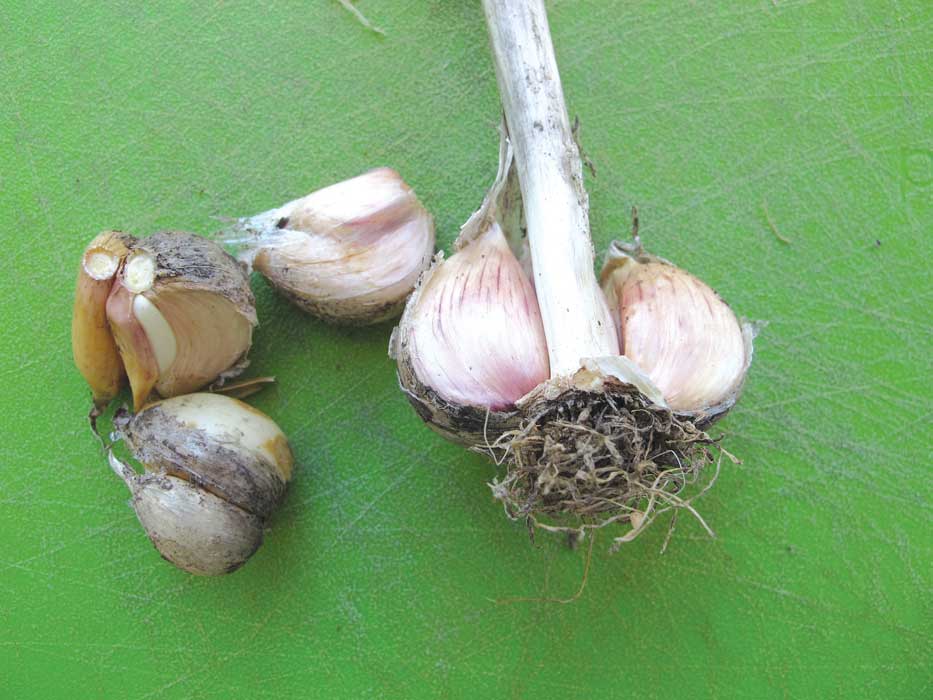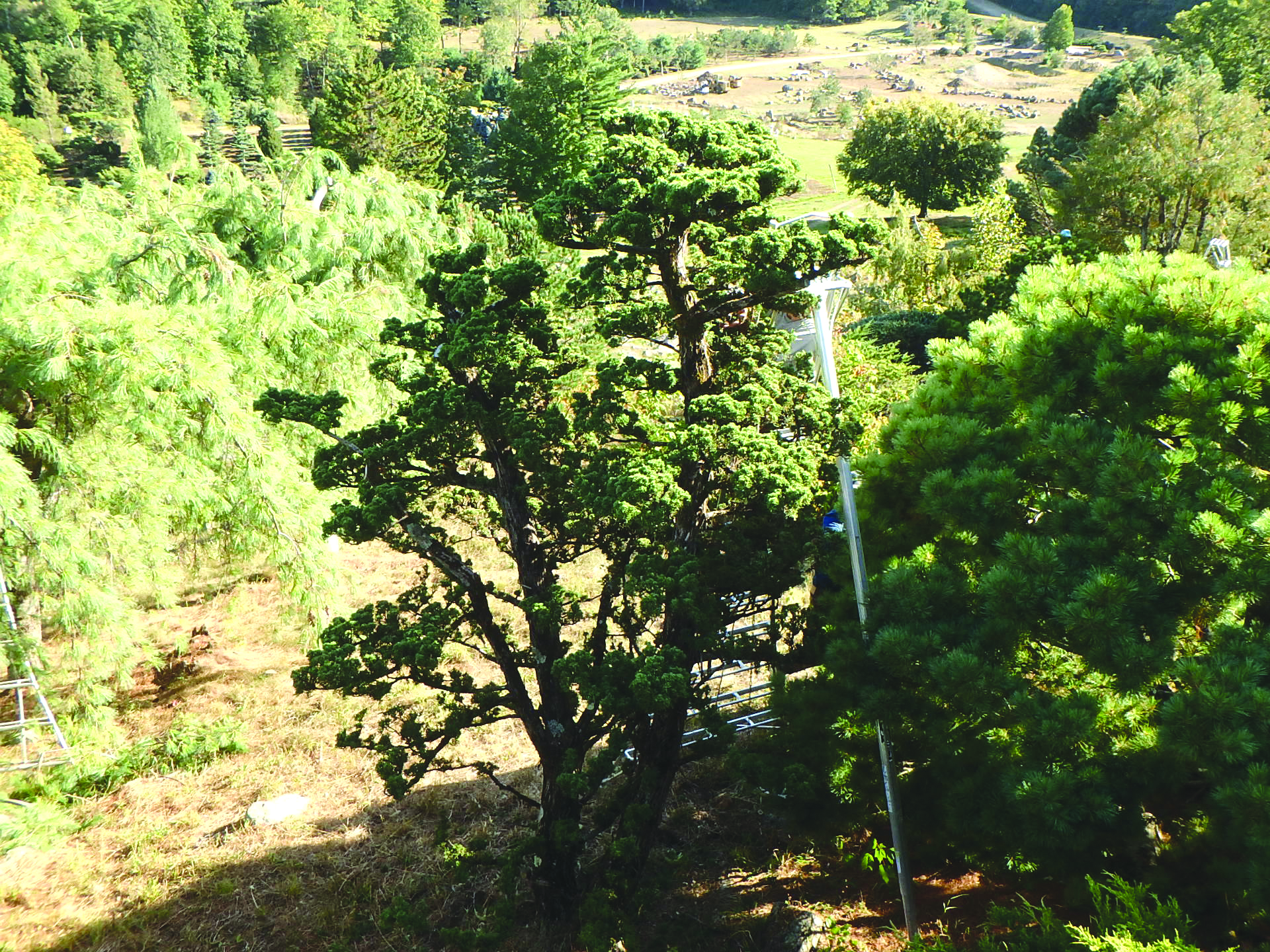Grateful for family, friends and gardens

I think it’s important to take time to count my blessings. I try to take time each day to reflect on how grateful I am for living the life I do. And on a sunny afternoon near Thanksgiving I like to sit outside and reflect on everything I have to be grateful for. Here are some thoughts about my life, and how gardening helps to make my life full, satisfying — and rich in flowers and vegetables.
I am grateful to have a loving family and wonderful friends. On July 1 of this year Cindy Heath and I got married, after 11 years of partnership. Our family and friends attended via Zoom. Cindy is a wonderful person, an accomplished fiber artist and a terrific gardener. Not only that, she loves to weed! The gardens here in Cornish Flat have never been so well-tended. I am so grateful to have her in my life.
I am very pleased to have a newspaper column that has kept me writing and learning for 22 years. On Nov.11, 1998, my first gardening column appeared in the Valley News of West Lebanon. In that article I reflected on how important it is to clean up the garden each fall, and to get rid of weeds before their seeds get in the soil.
I also noted, “As insects may have laid their eggs on or in vine crops, tomatoes and potatoes, it is not a good idea to compost these plants.” Diseased or insect-prone plants I recommended for the burn pile or the household trash — or perhaps a pile in a far corner of the property, well away from garden beds. I am happy that our vegetable garden is fully cleaned up and put to bed.
I am grateful for my gardens. My huge ‘Merrill’ magnolia tree that blooms with a thousand white blossoms on my birthday in April. The primrose garden with hundreds of blossoms in the shade of old wild apple trees in June. The peonies that are seemingly everywhere. Milkweed that attracts and nourishes the gorgeous monarch butterflies. Fall asters, and so many more.
Although this may sound silly, I am grateful to have so many potted geraniums in the house. This year we brought in all our geraniums (Pelargonium spp., not to be confused with perennial geraniums of a different plant family that winters just fine outdoors). They sit on bright windowsills and will bloom off and on all winter, and go outside next summer. Their bright red blossoms give me joy.
I am happy and grateful that I have a small crape myrtle tree in a pot and have learned how to overwinter it indoors. I bought it in Florida in 2018 and brought it home as carry-on luggage. Last winter I brought it indoors and overwintered it in our cold, dark basement that stays in the 35- to 50-degree range. I didn’t think it would survive, but it did and bloomed magnificently this summer. The fall foliage was a great red, the leaves dropped, and it has now settled in for its winter rest.
I am grateful that we have put up so much food for the coming months. We froze lots of whole tomatoes in zipper bags for use in soups and stews, along with dried cherry tomatoes and some tomato sauce. What else is in the freezer? Lots of leeks, zucchini, kale, Hubbard squash, beets, blueberries and peppers.
I’m happy to have good farm stands nearby. I only had a few peppers this year, so I bought half a bushel from Edgewater Farm in Plainfield at the end of the year. They are great farmers who use the IPM method: Integrated Pest Management. As IPM farmers, they use many of the techniques of organic farmers but reserve the right to use pesticides if a crop is in danger. I prefer to buy organic produce, but trust them to use the least toxic chemicals, and only if necessary. I buy my corn from them and I am always pleased when I get a corn worm: it means that they did not have to spray.
I am happy and grateful that I have been able to plant bulbs each fall for decades. Winters are long here, and the thought of all those little balls of energy waiting in the soil for the onset of spring to come up and share beauty with me makes me happy.
At age 74 I like to point out that I willmake it through another winter just because I want to see what else did. I regularly take chances with plants that are not supposed to be hardy in my climatic zone. This year I planted a cut-leaf Japanese red maple, a variety called Tamukeyama. The cut-leaf varieties are generally less hardy than the standard varieties, of which I have three.
The grower of our Tamukeyama, John Lyon of Newbury (Lyon Family Nursery) told me it is one of the hardiest varieties. We’ll see. I’m happy to have it, and if it does not survive a cold winter, so be it. Although I have never done this before, I will protect it from the wind with a little A-frame shelter made of plywood. I do love the plant.
I am happy and grateful for you, my readers. Each week I get nice emails or thoughtful hand-written notes thanking me for sharing my knowledge and sharing personal experiences, and only occasionally disputing my assertions. When my corgi, Daphne, passed away last summer, I was inundated with messages of sympathy. Thank you. Please write to tell me what you are grateful for, where you live, and if I can quote you in a future column.
Lastly, I am grateful that all the newspapers that carry my column are still in business. Subscribe! Buy the paper. Donate to the paper if you get it free. Advertise if you have a business. Local newspapers are the lifeblood of our communities.
Featured Photo: Freezing tomatoes extends the season, feeding me even in winter, for which I am grateful. Courtesy photo.






